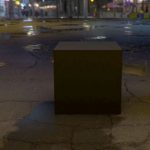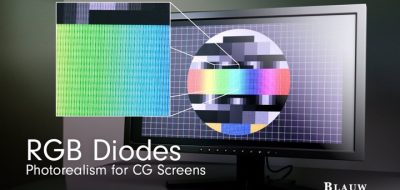Render Legion releases a new update to Corona Renderer, their CPU based unbiased and biased photorealistic renderer for 3ds Max. Corona 1.6 offers a newly overhauled scheme for distributed rendering, making it easier to leverage other machines for rendering. The renderer also sees distributed rendering work with adaptivity and rendering to a noise eleven limit, with better information on master/slave machines.
Distributed Rendering overhaul
Makes it easier than ever to leverage the power of all available machines. Improvements include 3ds Max being pre-started on all slave machines to reduce wait times; assets that are missing on the slave machines are transferred automatically only to those machines that need them; Corona DR now works with adaptivity, and rendering to a noise level limit; and more detailed and accurate information is displayed on master and slave machines, e.g. showing memory usage.
Push Scene Changes from Interactive Light Mix
The unique Interactive LightMix feature now allows changes made in the VFB to be baked into the scene, making LightMix an ideal way to set up lighting rather than edit individual lights. The automatic LightMix setup has been improved with the option to setup via instanced, grouped or individual lights, with the memory requirements shown for each different setup.
New Standalone Corona Image Editor
The new standalone Corona Image Editor (CIE) allows all denoising, LightMix and post-processing functionality to be used on Corona EXR files, giving access to all the Corona VFB features outside of any 3D software and without the need to re-render. Standard EXR files can also be loaded, and Corona post-processing effects such as tone mapping, bloom and glare, etc. can be applied. Post-processing and LightMix configurations can easily be exchanged between the CIE and the Corona VFB.
Post-Processing Options
Post Processing options have been extended, with custom tone curves, sharpen/blur capability, and improved vignetting.
New improved shading means that faceted terminator shadows on low-poly objects and materials with bump maps are no longer an issue.
Other Notable Changes
Other improvements include subsampling in Interactive Rendering, allowing much faster updates; new options for Corona Scatter to place objects along splines or in regular patterns; Triplanar mapping; non-360 stereo rendering; support for 3ds Max native 2D Pan Zoom and Lens Distortion; improved Corona RoundEdges map rendering; fuzzy render regions; and more.
The update also brings with it an extensive list of other improvements, features and bug fixes, and is compatible with 3ds Max versions 2012 to 2018.
Full information on the changes are available in the official blog post
Corona Renderer 1.6 for Autodesk 3ds Max is available for purchase on the developer’s website at http://corona-renderer.com, and there is also a 45-day unlimited demo version at https://corona-renderer.com/download/. Corona Renderer is fully integrated into 3ds Max, with integrated Cinema 4D and SketchUp versions in development.






